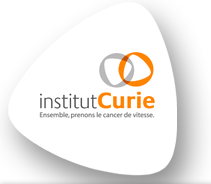Phenotype plasticity and populations’ dynamics : social interactions among cancer cells
La plasticité des phénotypes et la dynamique des populations : interactions sociales entre cellules cancéreuses
Résumé
It is commonly accepted that tumors arise from cells that escape the homeostatic controls which underlie the healthy histological structure and that cell phenotype is not the result of deterministic biochemical and genetic processes, but rather the stochastic and dynamic outcome of multiple intra- and intercellular regulation networks. This PhD aims to quantitatively study the phenotypic homeostasis of the cell populations and to present an approach to the fundamental question, never heretofore studied, regarding the autonomy versus collective control of cell fate. We studied in the long run, using flow cytometry and in 2D and 3D conditions, the level of expression of CD24 and CD44 of two breast cancer cell lines (SUM149-PT and SUM159-PT). Three phenotypes were isolated (CD24-/CD44+, CD24+/CD44+, CD24-/CD44-), the latter had not previously been documented in the literature. The phenotypic behavior of CD44-low and CD44-high subpopulations has been characterized by assessing their proportion and analyzing the fluorescence map. Thereby, we observed both a periodic behavior of appearance and disappearance of pool of cells characteristics of each cell lines and a phenotypic re-diversification for each subpopulation. Only the resulting population derived from CD24-/CD44- provided the same balance as the original unsorted population. 3D re-diversification process was observed in tumorspheres from CD24-/CD44+ and CD24+/CD44+. The cells CD24-/CD44did not have that potential but nonetheless outlived anoikis. These behaviors suggest that there is an inter-cell coordination regulating the balance of phenotypic proportions. To discover the social rules regulating inter-phenotypic spatial organization, we have set up a reporter of the endogenous variations of CD24 and CD44 and developed a theoretical model of cell interactions. This work has confirmed our hypothesis that inter-cellular social rules are determining the phenotypic expression at both the uni- and multicellular scales.
On admet communément que les tumeurs proviennent de cellules échappant aux contrôles homéostatiques qui sous-tendent les structures histologiques saines et que le phénotype d’une cellule n’est pas le résultat de processus génétiques et biochimiques déterministes mais la conséquence stochastique de réseaux de régulation intra- et intercellulaires. Ce doctorat vise à étudier quantitativement l’homéostasie phénotypique de populations cellulaires et à présenter une approche à la question fondamentale, mais jusqu’alors jamais étudiée, concernant l’autonomie versus le contrôle collectif du devenir des cellules. Nous avons étudié sur le long terme, par cytométrie de flux et dans des conditions 2D puis 3D, le niveau d’expression de CD24 et CD44 de deux lignées cellulaires de cancer du sein (SUM149-PT et SUM159-PT). Trois phénotypes ont été isolés (CD24-/CD44+, CD24+/CD44+, CD24-/CD44-), ce dernier n’avait pour le moment pas été documenté dans la littérature. Le comportement phénotypique des sous-populations CD44-low et CD44-high a été caractérisé en évaluant leur proportion et en analysant leur spectre de fluorescence. Ainsi nous avons observé des comportements périodiques d’apparition et de disparition de pool de cellules caractéristiques des lignées et une re-diversification des phénotypes pour chacune des sous-population. Seule la population issue de CD24-/CD44- re-diversifiée présente le même équilibre que la population initiale non triée. En 3D, le processus de re-diversification a été observé dans les tumorsphères issues de CD24-/CD44+ et CD24+/CD44+. Les cellules CD24-/CD44- n’ont pas ce potentiel mais survivent néanmoins à l’anoïkis. Ces comportements laissent penser qu’il existe une coordination intercellulaire régulant l’équilibre des proportions phénotypiques. Pour découvrir les règles sociales régissant l’organisation spatiale inter-phénotypique, nous avons mis en place un rapporteur des variations du niveau d’expression endogène des marqueurs d’intérêt et élaboré un modèle théorique d’interactions cellulaires. Ce travail a conforté notre hypothèse selon laquelle il s’établit des règles sociales inter-cellulaires déterminant l’expression phénotypique à l’échelle uni- et pluricellulaire.
Origine : Version validée par le jury (STAR)
